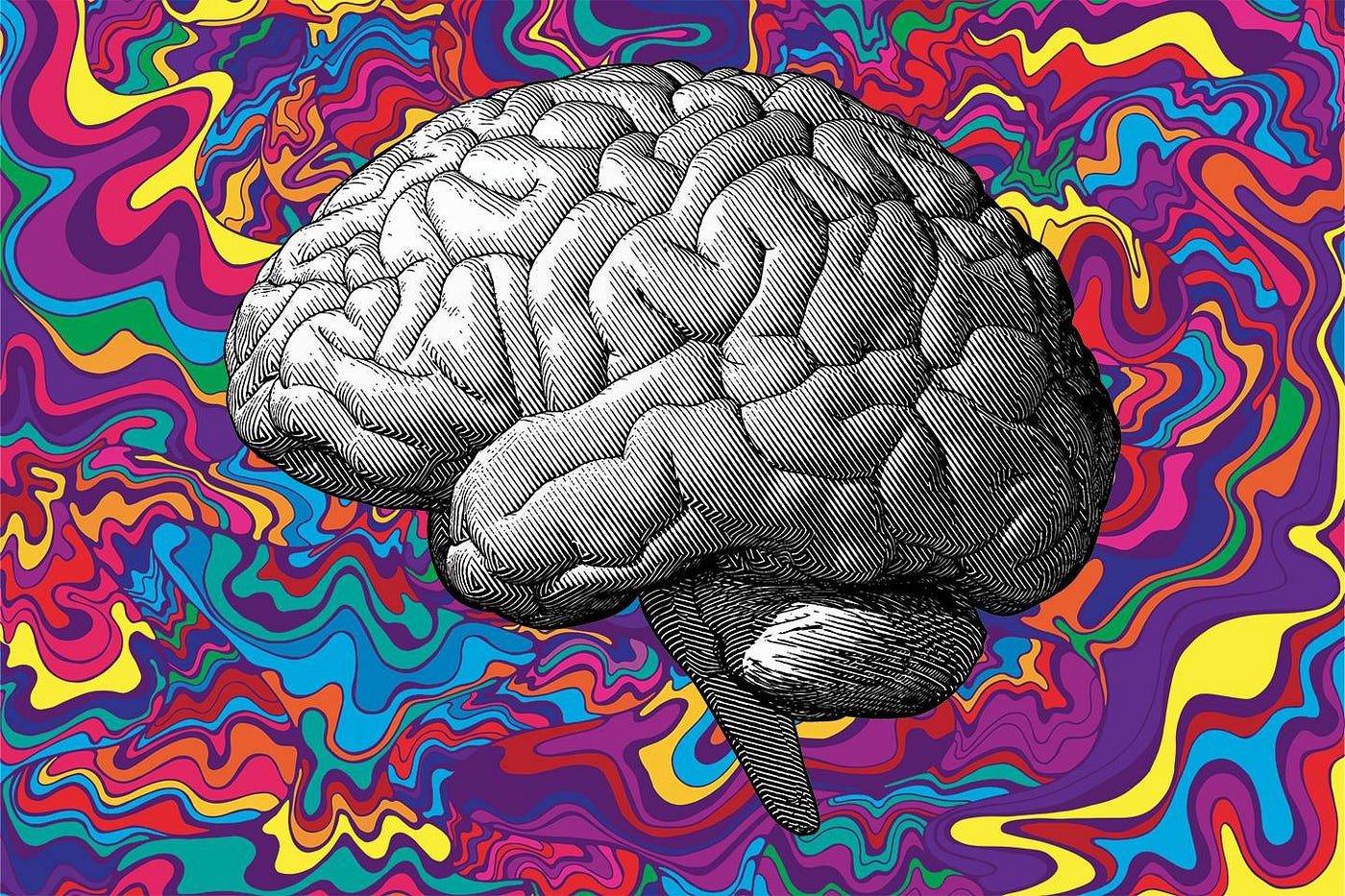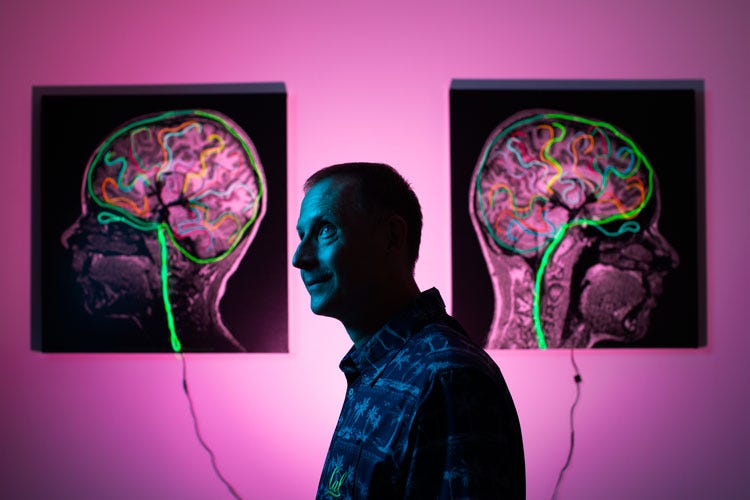This is Part 3 of a 5 Part “rough guide” to psychedelics. Read this series if you want to deepen your understanding of the subject across a variety of sub-topics.
Part 3 is about the science of psychedelics. For the rest of the series, read Part 1: What are psychedelics and a short history; Part 2: The psychedelic experience; Part 4: The safety of psychedelics; Part 5: The business of psychedelics.
Read the Chinese translation of this article here:
My DMs are open for continued conversations and learning, whether you’re a startup, investor, activist, researcher, healer. I welcome hearing from people who are active in this area. You can find me on my personal website, Twitter, IG, LinkedIn.
PART 3: THE SCIENCE OF PSYCHEDELICS
(scratching the surface!)
Pharmacology

Psychedelics are chemicals that have an effect on our brains. To understand the chemistry of psychedelics, we must start with serotonin. Serotonin (5-HT) is a neurotransmitter that helps relay signals from one part of the brain to another. It influences a variety of functions, including mood, sexual desire, sleep, appetite, memory, learning and more.
Whilst it is too simplistic to say that conditions like depression are caused by low serotonin levels, there is certainly a link and a rise in serotonin levels can improve symptoms. Hence why many antidepressants are of the SSRI form (selective serotonin reuptake inhibitors); these drugs increase the levels of serotonin in our brains by inhibiting their reabsorption.
What about psychedelics? A wide range of them (including LSD, psilocybin, mescaline, DMT) are known as serotonin receptor agonists: “receptor” meaning they bind primarily to the serotonin 5-HT2A receptor sites in the brain, and “agonist” meaning that they produce a similar response to the intended chemical and receptor. (However the exact nature of how psychedelics induce changes in perception and cognition via the 5-HT2A receptor is still unknown). The molecules also bind to other receptors in different amounts, which is partly why there are differences between the effects of different psychedelic compounds.
This image below is from the 1999 Yale paper on “Serotonin and Hallucinogens” [1]. In this paper they remark on the structural similarity between serotonin (5-HT), LSD and psilocin (psilocybin is broken down into psilocin in the digestive tract).

Applications

There are enormously wide applications of psychedelics. Let’s look at these on a spectrum, from wellness to illness:
This is a long list, and it’s easy to see how this may come across as an unrealistic panacea. (Like those articles that get shared on Indian WhatsApp about how lemon juice and turmeric can cure all your woes, from chronic heart disease to cancer. Sorry, couldn’t resist the temptation for this in-joke!) What’s different is that these conditions have something in common. And for that let’s turn to a simplified view of the neuroscience.
Neuroscience

The answer appears to lie in a section of the brain called the Default Mode Network (“appears to” since much of this is bleeding edge research, so it is too early to say conclusively); as well as the brain’s neuroplasticity. The Default Mode Network (DMN) is a group of structures in the brain (including the prefrontal cortex) that are responsible for a number of our higher order functions — including rumination/self reflection, mental time travel (thinking about the past or the future), emotions, memories, planning. This part of the brain is evolutionarily the most recent, and most advanced part of the human brain. It is what makes us different from other mammals. One neuroscientist called it the orchestra conductor of the neural symphony.
Think about all these different functions for a moment. They are what make us who we are, the key to the formation of our identity, the seat of our ego! A common link between these mental health conditions listed above is that they involve repetitive loops and destructive narratives. A happy brain is a supple and flexible brain. Depression, anxiety, obsession, and the cravings of addiction are the unfortunate outcomes of a brain that is excessively rigid or fixed in its pathways and linkages — a brain with more order than is good for it. Think back to our snowy hill metaphor, this is a brain whose tracks are too set and new pathways are impossible. And this is caused by an overactive DMN.
In a 2012 study led by Robin Carhart-Harris at Imperial College London’s Center for Neuropsychopharmacology, it was found that the default mode network is dampened during a psychedelic trip. This means that patients are no longer over-analysing, overly ruminating, too anxious about the future or depressed about the past. They are able to be more present, more connected. And since the DMN is the seat of our ego, dialling down this part of the brain is what leads to the dissolution of the ego, or as some call it, “ego death”.
A similar team of researchers led by Robin Carhart-Harris at Imperial also found in a 2014 paper that the brain under psilocybin looks very different to the brain under placebo [2]. Specifically, there are stronger links between different sections of the brain, leading to more creative “breakthrough” thinking, whether that’s a breakthrough about one’s life or one’s work.
This is where the importance of the brain’s neuroplasticity comes in. These new pathways are not just temporary, they may stick. Think back to Mendel Kaelan’s sledges in the snow metaphor. The new tracks being formed represent the brain’s inherent neuroplasticity.
Dr Henry Fisher, Chief Scientific Officer at Clerkenwell Health said that “the increase in neuroplasticity is central to the therapeutic effects of psychedelics; helping people form new thought patterns and ways of coping, whilst helping them unlearn destructive thought patterns”.
Research

Tim Schlidt and Daniel Goldberg from Palo Santo VC said that going back to the 60s, we have 1000s of research papers across over 40,000 patients in psychedelics. Whilst many of the older ones are less rigorous (e.g. not double blind), it shows that there is already a huge and growing body of evidence around the efficacy of psychedelics. (For those less familiar with scientific research methodologies, a double blind study is one in which neither the participants nor the researcher knows which treatment participants have received until the study is over. Thus the results of the study are less likely to be biased.)
The UK has a strong heritage in psychedelic research in the new psychedelic renaissance, going back to 1998 when Amanda Fielding founded the Beckley Foundation, an NGO dedicated to drug policy reform and scientific research. This heritage was built upon by the research teams at both King’s College London and UCL, leading to companies like Compass Pathways and Small Pharma.
And this research is only accelerating. For the first time ever, 2019 saw the establishment of not 1, but 2 centres solely dedicated to the study of psychedelic drugs: the Centre for Psychedelic Research at Imperial College London, and the Center for Psychedelic and Consciousness Research at Johns Hopkins University. Other academic institutions publishing research in the field include UCL, Berkeley and Yale.
Before talking about some specific examples, a quick primer on the drug development process. Once a new molecule is discovered to have therapeutic potential, it will progress through preclinical studies (lab and animal testing), Phase 1 trials (tested with small group of healthy human volunteers), Phase 2 trials (first test with a small group of patients with the disease it is meant to treat), Phase 3 trials (large, multi-site, international trials), and finally approval.
The industry website Psilocybin Alpha have put together a very useful resource — their “Psychedelics Drug Development Tracker”, which maps the key drug discovery & development activity in the space, the compounds being tested, the organisations behind them and the stage of progress.
There are 46 trials listed on the tracker in Phase 1, 2 or 3. Only one of these is in Phase 3. There are a further 22 trials in Phase 2; three in combined Phase 1/2; and 20 in Phase 1. This is followed by 24 listed on the tracker at preclinical stage. I’m not sure if this is intended to be an exhaustive list. Another stat I heard from the team at Clerkenwell Health is that there are 60+ drug companies in the market working on psychedelic compounds, with 100+ clinical trials. An impressive number!
The only one currently in Phase 3 is the MAPS trial investigating MDMA-assisted psychotherapy as a potential treatment of post-traumatic stress disorder (PTSD). This is a an important case study. What I hear from people in the industry is that MAPS’ founder Rick Doblin — who has been an active psychedelics campaigner for decades — was highly strategic in his choice of PTSD in war veterans as a research focus area. Knowing that this would be precisely the kind of topic that would galvanise bipartisan support in the USA. This Phase 3 trial kicked off in 2017, and is expected to be completed in 2021, meaning that the FDA could approve the treatment as early as 2022.
The most advanced trials are dominated by MDMA and psilocybin (as well as synthetic formulations of psilocybin). There are also a few trials for LSD, ketamine (which is already legal for therapeutic use; these trials are exploring the application to different conditions), and ibogaine.
Understandably, the applications that will help move the needle on deregulation are the most acute health conditions, so trials are currently focused on a range of such conditions including PTSD, treatment resistant depression (TRD), eating disorders, anxiety, cluster headaches, alcohol use disorder, opioid use disorder. Allowing patients with these serious illnesses to legally access these effective treatments for the first time will be a major paradigm shift. Once meaningful progress is made here, we should start to see more effort being put into the “softer”, wellness end of the spectrum to explore applications around creativity, productivity, prosocial attitudes, happiness, empathy. Personally I am very excited about this phase.
The organisations conducting these trials are dominated by startup/for profit pharmaceutical companies, with a couple of not for profits working in the space. The major players being:
Not for profit:
- MAPS
- Usona Institute
For profit:
- Compass Pathways
- MindMed
- Cybin
- Awakn
- Small Pharma
- Eleusis
- Beckley Psytech
We’ve gone on a whirlwind tour through the science of psychedelics. To recap, we talked about the wide ranging applications. We scratched the surface of the pharmacology and the neuroscience of these compounds and their affects on our brains. And we explored the wide breadth of research that is happening in this area, both at an academic and clinical level.
Next up, click here to read Part 4 of the series, about the safety of psychedelics.
With thanks to Sean McLintock, Tom McDonald, Alastair Moore, Dr Henry Fisher, Sjir Hoeijmakers and Andre Marmot for contributing or reading drafts of these posts.
